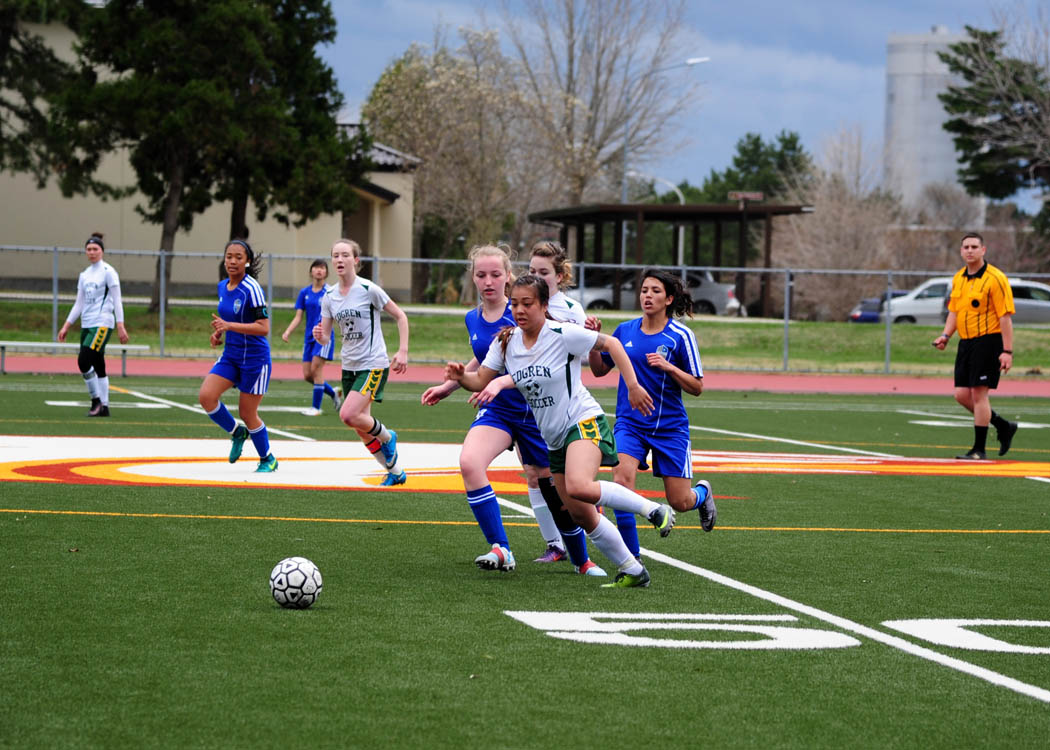Dose-response
relationship of neuromuscular training for injury prevention in youth athletes:
A meta-analysis.
relationship of neuromuscular training for injury prevention in youth athletes:
A meta-analysis.
Steib S, Rahlf AL,
Pfeifer K, and Zech A. Front Physiolo.
(8) 2017.
Pfeifer K, and Zech A. Front Physiolo.
(8) 2017.
Take Home Message:
A 10-15-minute neuromuscular training program deployed at least 2-3 sessions
per week could offer more than a 45% reduction in risk of lower extremity
injury.
A 10-15-minute neuromuscular training program deployed at least 2-3 sessions
per week could offer more than a 45% reduction in risk of lower extremity
injury.
Youth athletes are at greater risk of
injury than nonathletes. Neuromuscular training programs effectively decrease sports-related
injury rates, yet dose-response guidelines are unavailable. Therefore, Steib
and colleagues completed a systematic review and meta-analysis to identify the
optimal dose of neuromuscular training to prevent lower extremity injuries in
youth sports. After a literature search, the authors used a PICOS (patent/problem, intervention, control/comparison, outcome, study design) strategy to screen studies for inclusion. The reviewers
included studies based on 5 criteria: (1) athletes were 21 years of age or
younger, (2) a neuromuscular training program was evaluated, (3) the study
contained a control, (4) lower extremity injury data were available, and (5) an
analytical study design was used (e.g., randomized trial, cohort study). Two
independent reviewers evaluated study quality using the PEDro scale. Data from all included studies were
then extracted and analyzed. The authors included 16 articles in the final
analysis. Athletes ranged from 12-18 years of age and soccer and basketball
were the most commonly assessed sport. Overall, 1,417,730 athlete exposures and
1,724 lower extremity injuries were recorded resulting in a ~42% reduction in
lower extremity injury risk (41% reduction among randomized trials). Overall, the
authors found that neuromuscular training programs effectively reduced the risk
of injury by at least 45% when deployed at least 2-3 times per week, for 10-15
minutes per session, and with a combined weekly training volume of 30 or more minutes
per week.
injury than nonathletes. Neuromuscular training programs effectively decrease sports-related
injury rates, yet dose-response guidelines are unavailable. Therefore, Steib
and colleagues completed a systematic review and meta-analysis to identify the
optimal dose of neuromuscular training to prevent lower extremity injuries in
youth sports. After a literature search, the authors used a PICOS (patent/problem, intervention, control/comparison, outcome, study design) strategy to screen studies for inclusion. The reviewers
included studies based on 5 criteria: (1) athletes were 21 years of age or
younger, (2) a neuromuscular training program was evaluated, (3) the study
contained a control, (4) lower extremity injury data were available, and (5) an
analytical study design was used (e.g., randomized trial, cohort study). Two
independent reviewers evaluated study quality using the PEDro scale. Data from all included studies were
then extracted and analyzed. The authors included 16 articles in the final
analysis. Athletes ranged from 12-18 years of age and soccer and basketball
were the most commonly assessed sport. Overall, 1,417,730 athlete exposures and
1,724 lower extremity injuries were recorded resulting in a ~42% reduction in
lower extremity injury risk (41% reduction among randomized trials). Overall, the
authors found that neuromuscular training programs effectively reduced the risk
of injury by at least 45% when deployed at least 2-3 times per week, for 10-15
minutes per session, and with a combined weekly training volume of 30 or more minutes
per week.
The results of the current study highlight
that clinicians could encourage coaches and teams to build these short-duration
neuromuscular training programs into pre-practice or pre-game warm-ups. In
fact, many teams might not need to replace their existing warm-up programs. Instead
they could adapt their current warm-up to include recommended types of exercises. Clinicians can use these results to show coaches that
these short-duration programs could be easily implemented without compromising
practice time. It would be interesting to know if these results were consistent
across sports and age groups. While more research may be needed to address this
question, clinicians should start to encourage implementing short-duration neuromuscular
programs because they can dramatically reduce the risk of lower extremity
injury.
that clinicians could encourage coaches and teams to build these short-duration
neuromuscular training programs into pre-practice or pre-game warm-ups. In
fact, many teams might not need to replace their existing warm-up programs. Instead
they could adapt their current warm-up to include recommended types of exercises. Clinicians can use these results to show coaches that
these short-duration programs could be easily implemented without compromising
practice time. It would be interesting to know if these results were consistent
across sports and age groups. While more research may be needed to address this
question, clinicians should start to encourage implementing short-duration neuromuscular
programs because they can dramatically reduce the risk of lower extremity
injury.
Questions for Discussion: Have you implemented a
neuromuscular training program? If so what specific programs have you
implemented and why?
neuromuscular training program? If so what specific programs have you
implemented and why?
Written by: Kyle Harris
Reviewed by: Jeffrey Driban
Related Posts:
FIFA 11 … (But Really FIFA 11 +) Programs Are Effective in Reducing Football (Soccer) Injuries
FIFA 11+ Reduces the Risk of Injuries Amongst Soccer Players
Another Feather in the Cap of the FIFA 11+ Injury Prevention Program
High Adherence to the FIFA 11+ Decreases Injury Risk Among Youth Female Soccer Players
FIFA11+ Improves Performance and Reduces Injuries in Soccer



I began neuromuscular training as an integral part of training to play sports for teen female athletes. Now, 600+ females trained and elite male athletes have all benefited with safe and age-appropriate training to play sports. Every evidence-based report have all concluded the same results… IT REALLY WORKS!!!!… Now, we need to convince all adults to have athletes participate in neuromuscular training.
Thanks Warren for sharing your clinical experience. We need to convince our peers to that it works in the real world and your story helps. Thanks!